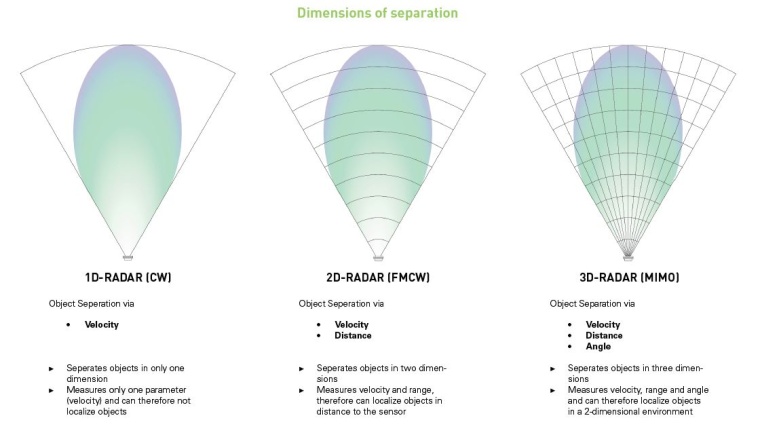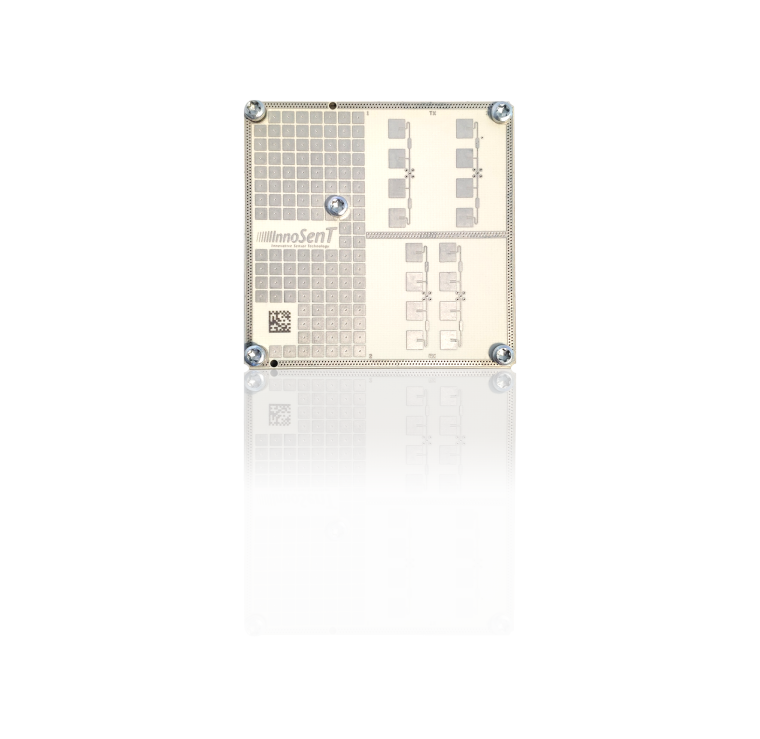Radar: Equipped for All Applications


Functionality is the be-all and end-all when it comes to security technology. The systems used must work as accurately and reliably as possible in order to avoid missing and false alarms. If the technology reaches its limits, new approaches are called for.
In order to yield progress, security equipment manufacturers are currently pursuing a wide array of approaches. For example, camera systems now increasingly rely on artificial intelligence in order to harness relevant innovations in parallel to their highly sophisticated lenses. While cameras are used for visual representation and identification, radar is responsible for anonymous surveillance. Thus, another industry trend lies in the use of multifunctional radar systems.
Extensive Measurement Data
Beyond such standards as infrared and cameras, new possibilities for security technology are emerging: the days in which radar was suitable only for perimeter monitoring are long gone. The technology is predestined for use in protecting buildings.
Why? The sensor technology offers extensive measurement data. It is also insensitive to external influences such as weather or lighting conditions.
The technology’s potential for the security sector has not nearly been fully exploited. With radar as well, clever algorithms are becoming increasingly important: with complex signal processing, new features can be implemented which enhance and bolster the functionality of the systems.
Demands Are On The Rise
The market very much welcomes these developments. Mere motion sensors no longer suffice for users to secure buildings or areas. Increasingly high demands are being placed on the functionality and accuracy of security systems.
But what expectations must a new security system meet? In order to find this out, the radar experts from Innosent conduct regular surveys. The findings are then incorporated into product development.
Greater Functionality Required
Currently, customers are particularly demanding more individual customisation options. After all, the environment to be secured exhibits a very wide range of customer-specific challenges.
For example, certain areas should be able to be delimited for monitoring. Users also desire sensitivity thresholds. This way, the system reacts more or less sensitively to events in the detection area depending on the desired application. In addition, detections should be able to be filtered and categorised in order to concentrate on what is essential.
The radar has to detect multiple targets simultaneously and unambiguously.
State-of-the-art Radar Solutions
Bearing these factors in mind, Innosent got right to work on developing a complete series of products. After all, the technical innovations should not be reserved for one single use case. The aim was to develop a product series with different ranges. The systems serve a different purpose depending on the design of the detection area.
The basic functions should be available to the customer with each variant: object locating, delimited zones, multi-target capability with good object differentiation, individual filter and adaptation options, and optional tracking.
In order to handle these numerous tasks, very complex systems are required. Only advanced radar technology meets the high demands of the market. However, this meant pioneering work on the development side. According to Innosent, such radar solutions had not been previously available to the security sector. The radar experts specifically used the Mimo method to develop an FMCW radar with three-dimensional resolution.
Mimo Proves Indispensable
Let’s delve a bit into the ins and outs of radar technology. ‘Mimo’ stands for multiple input – multiple output and refers to the use of several transmitter and receiver antennas. Radar systems emit electromagnetic waves in order to detect objects.
The term ‘radar resolution’ refers to a radar’s capability to precisely differentiate multiple targets from each other. The higher the resolution, the better the system differentiates individual objects. Radar experts also often use the related term ‘multi-target capability’. This describes a radar’s capability to clearly recognise and differentiate target objects.
Radar resolution can be divided up into measurement dimensions. It is defined via variables of speed, distance, and angle offset and is determined by the selected radar type (CW, FSK, FMCW, Mimo).
Through the arrangement of several antennas, the detection area can be divided up into individual, virtual segments. This results in a field that is broken down according to distance and angle and which invisibly spans the detection area.
The more antennas, the higher the number of angle elements and the finer the segments. The distance resolution is derived from the bandwidth used. This enables an object to be located more effectively. The more precise, spatial differentiation enables the multi-target capability and has a positive impact on the susceptibility to interference.
An FMCW Mimo radar has a three-dimensional radar resolution: the first dimension differentiates objects based on speed, the second based on distance and the third depending on the classification into the angular segments (Mimo procedure).
Only with a 3D Mimo radar are such required functions possible as multi-target capability and object location in complex environments. Radar systems with lower resolutions without angular selectivity (CW, FSK, or FMCW without Mimo technology) would not have done the job.
Algorithms Expand the Functionality
All other requirements are fulfilled by signal processing. Using clever algorithms, Innosent have developed a Smart Tracker feature, which enables objects to be tracked and located over time. They also created different filter functions that eliminate false detections caused by rain or wind.
In the software development, Innosent implemented further user-friendly features: customers can define alarm and ignore zones in a GUI in order to focus on or ignore areas during security surveillance. Users can make configurations to optimally adapt the radar performance to their individual situation.
Variations For All Cases
With the isys-50xx series, Innosent was on of the first companies that managed to offer a cost-effective solution boasting the advanced Mimo radar technology to the security industry. The product variations cover a very broad array of applications in security surveillance – from close-range to large-area surveillance and from movement detectors to perimeter protection.
When the first products, the isys-5010 and -5020 radar systems, were available from series production, they quickly conquered the market. They targeted the dual-technology approach. They left the customer leeway for individual signal processing and are available without a tracking feature. The successors isys-5011 and -5021 feature the Smart Tracker.
Rounding Off Series
The latest product in the series is the isys-5005. Compared to the existing systems, it is designed for a relatively small range of 15 metres. Its equipment makes it ideal for use as a security system or door opener.
The near-range sensor is now proving to be tough competition for more conventional technologies. Because the isys-5005 is the first sensor to offer more than just motion detection in the low-cost segment. For the first time, Mimo radar technology is also being used to secure private households, small shops, or companies cost-effectively. The integrated tracking feature enables people’s or vehicles’ movement behaviour to be monitored anonymously.
The system provides users with wide-ranging information about the events in the detection area (object type, x and y coordinates, speed, direction of movement of detected persons or objects). During development, the focus lay on user-friendliness and easy integration into the final product.
The result is a compact radar system that carries out signal processing directly in the product. Thanks to a quick start guide and the system’s compatibility, the isys-5005 can be commissioned and configured in just a few steps. Its wide aperture angle means great freedom in placing the sensor.
Business Partner
InnoSenT GmbHAm Rödertor 30
97499 Donnersdorf
Germany
most read



Assa Abloy's battery-powered Aperio KL100 secures lockers
Boost workplace security and operational flexibility by securing more than just doors.

GIT SECURITY AWARD 2026 - The winners have been announced!
GIT SECURITY AWARD 2026: The best safety and security solutions of the year - now an overview of all winners

Security management, building security & perimeter protection: the winners of category E at the GIT SECURITY AWARD 2026
GIT SECURITY AWARD 2026: Security management, building security & perimeter protection - an overview of the most innovative solutions








